I’ve written a lot about Russian tea gardens over the last couple of years.

But I didn’t think, for one second (at the time), that I was one of the only English language sources on the subject. That is, until I got a message from Thomas Tomporowski of Tea in the City, a vendor op located in the United Kingdom. He was looking to research the possibility of carrying Russian teas for his new company, but when he went to research the gardens in Sochi region . . . I was pretty much it. And, granted, that ain’t much.
Luckily, for the tea community at large, he took that leaf journey a step further . . . and actually went to some of these gardens himself. He even blogged about the experience HERE. You should read it. I’ll wait.
All caught up? Great!
In January, Tea in the City passed on three of their finds to me; a black tea, a yellow tea, and a green tea, respectively. All of which were from gardens I’d written about. I was over the moon that two of them were from Khosta—easily my favorite garden in the region.
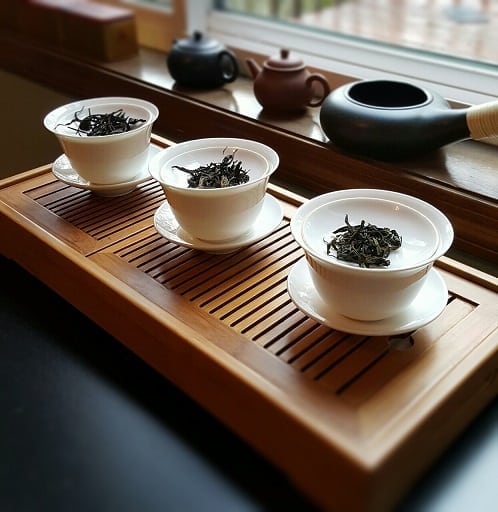
For brewing, I approached these according to their given types. I used roughly a heaping teaspoon of leaf, each got their own 6oz. gaiwan, and I heated water according to their brewing demands. The black tea was treated to a full boil and a three-minute steep. The yellow tea was treated to the same time and 185F water. And the green tea was brewed up at 175F and a three-minute infusion.
Krasnodar Black, Solokhaul Tea Estate – October, 2016
I was lucky enough to try Solokhaul’s black teas on, not one, but two other occasions. According to Thomas, the garden usually only produces one kind of black tea and green tea, but they do custom styles on commission. One of the teas I had from them a year ago was meant to mimic a Keemun, and—by golly!—it tasted like a Keemun. But trying a black tea from them plucked in late-Autumn was something new entirely.
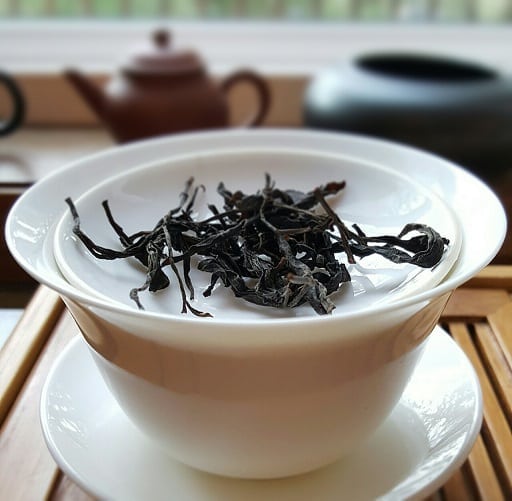
The leaves were “yuge!” Seriously, the longest one was about the size of my pinkie. Color-wise, the leaves were black and brown; nothin’ new there. But the smell they gave off was different from the standard, chocolate-malted “whatever” I had from prior brew-ups. This time? I whiffed wood and wintergreen.
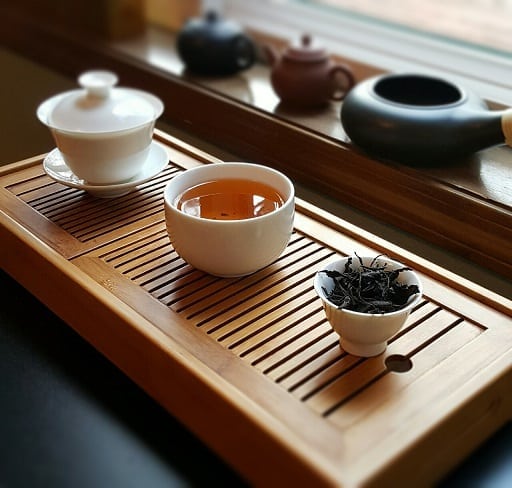
The liquor brewed up medium-brown, similar to offerings past. About “Darjeeling second flush” dark, if I were to come up with an immediate comparison. The aroma, though? Oh yeah, it was way different. I sniffed straight malt and tannins from this deceptive sucker. At first, I thought I brewed it wrong or went over the mark by thirty seconds. But nope, those fears were put to rest on palate. While there was a slight tannic tickle on the intro, that fell by the wayside quickly. Raisins and wood replaced it. The Darjeeling comparison continued, reminding me of a monsoon flush offering.
All in all, quite decent . . . but I do miss the fudge notes from Solokhaul’s past brews. Perhaps they were missing because of the autumnal plucking time. Dunno.
(NOTE: Tea in the City doesn’t carry this tea. They just wanted my opinion on it.)
Krasnodar Gold, Khosta Tea Estate – May, 2016
This unique yellow looked a little different than the one I had in 2015. The leaves were darker, looked far more oxidized, and their aroma—while still retaining the tropical bend I liked—seemed earthier. Given no information, I would’ve thought I was looking and sniffing a young sheng puerh maocha. But the sweetness on the back-ended removed that comparison.
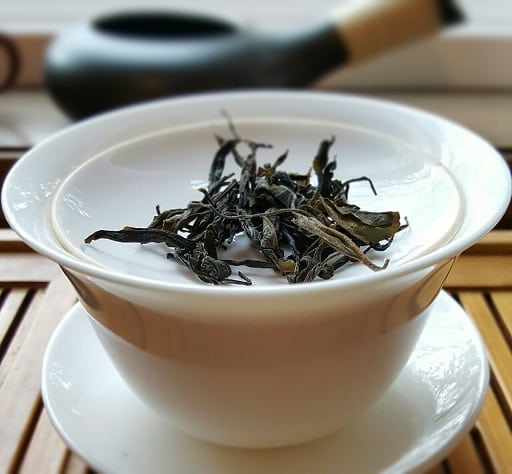
The liquor brewed up the same deep yellow as last year’s, if not with a bit more amber to the collage. Point being, it lived up to the “Gold” in its new title. The aroma this time around? What the heck?! It was completely different from the prior year. 2015’s smelled like a typical yellow tea; this smelled like a Taiwanese oolong. More specifically, an oolong from Ali Shan. There was an underpinning of vanilla sweetener to go along with the tangerine zest. On taste . . .
Oh my God.
Just . . . oh my God.
Ohmigawwwd, even.

Not sure if something different was done in processing, or if they had weird off-season weather, but this was a completely different tea. Sure, there were signs that a yellow tea process of some sort was used. But the betting man in me wants to think they upped the oxidation a bit before they instituted the kill-green. This was hovering on a tightrope above oolong territory . . . and it was better for it. I just wish I had this year’s oolong to compare it to.
A yellow tea, grown in Russia, processed Chinese style . . . that tastes like a high mountain Taiwanese oolong . . . nothing makes sense anymore.
Krasnodar Green, Khosta Tea Estate – May, 2016

Of the three, the Khosta green looked exactly as I remembered. Wild-looking, forest-green, medium-length leaves with an aroma of . . . “mountains in springtime”. Yeah. It was the only one of the three that reminded me, note-for-note, of the prior year’s offering. If there was any difference, it was something sage-y in the aromatic trail-off. But that was it.
The liquor brewed up light green—as expected—and the aroma was . . . apples.

Like, apples that weren’t ready to be plucked, but almost there. There was also a bit of a Chinese green tea bend to the aroma, similar to a Xue Ya. On taste, the intro was pleasantly grassy with a slight citrus bend, followed by a rising top note of olive leaves and cantaloupe. Not as spry or fruity as the Spring 2015 version, but more full-bodied, and still a delightful green tea, nonetheless.
Favorite?
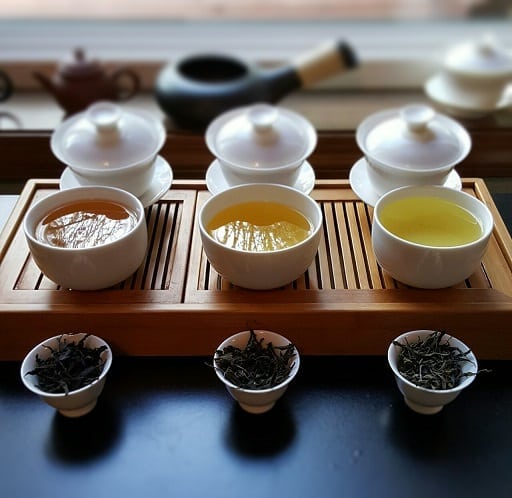
Oh, the yellow tea. Holy heck, it was beyond my expectations. The green tea was still great by Khosta’s standards, but this year’s yellow totally caught me off guard. I . . . may need to pick up more. That is, if other people don’t beat me to it after this writing.
For Tea in the City’s Russian collection, go HERE.
Leave a Reply